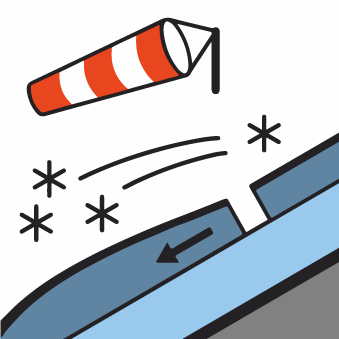
Danger level
 | 1800m |
|  |
|  |

In the high mountain gullies and moguls there are wind-drifted smal windslabs from new snow.
A small avalanche danger prevails at the highest altitudes. High-lying couloirs and couloirs where new snow is blown by the wind on top of the old base are the main risk areas. The snow cushions thus formed are clearly distinguishable from the old base and their release is possible after a large additional load, on south to south-eastern, very steep to extremely steep slopes .Due to the relatively small amount of new snow, only small avalanches are possible in isolated locations.
Snowpack
Snow depth is below average and snow is unevenly distributed. The boundary of intermittent snowfall will be around 1300 m above sea level. . Below this threshold, snow depth is low and snow is waterlogged due to warming. Above the forest belt and in narrow troughs, snow may be locally more abundant. Smaller slabs and snow pillows of blown snow can also be found here, lying on top of a layer of older, frozen snow.
Tendency
Persistent
